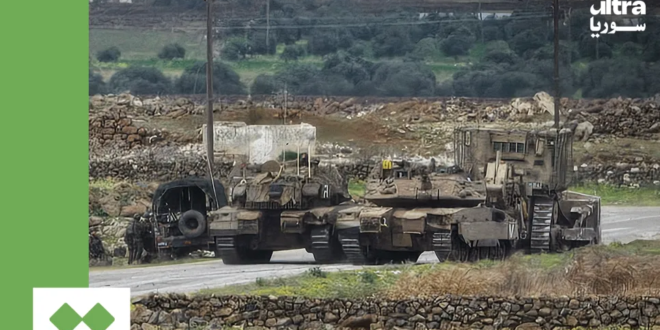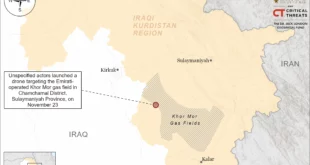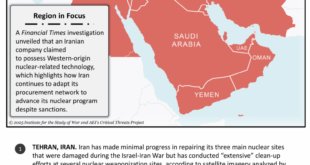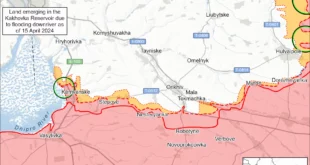The collapse of Bashar al-Assad’s regime in December 2024 marked a watershed moment in Middle Eastern geopolitics. Abrupt and largely unforeseen by both regional and international actors, Assad’s fall brought an end to decades of autocratic rule and the relative stability that had defined Syria since Hafez al-Assad seized power in 1970.
For Israel, this sudden upheaval presented a rare opportunity to reshape the regional landscape in line with its strategic and security doctrine. Rather than engaging constructively with Syria’s interim president, Ahmad al-Sharaa—who has championed political moderation and regional outreach—Israel adopted an openly antagonistic stance. Prime Minister Benjamin Netanyahu and Defence Minister Yisrael Katz described Sharaa’s government as an “existential threat”, citing his Islamist past and dismissing his ideological evolution. In an apparent bid to legitimise a pre-planned expansionist policy, they even likened his administration to Hamas.
In a significant escalation, Israeli warplanes carried out an airstrike near the presidential palace in Damascus on Friday, 2 May 2025. Netanyahu and Katz, in a joint statement, described the attack as a direct warning to Syria’s new leadership, citing concerns over perceived threats to the Druze community and potential military deployments in southern Syria.
Israeli Occupation of Syrian Territory
In the immediate aftermath of Assad’s ousting, Israel swiftly moved to assert control over the United Nations-monitored buffer zone between the two countries. On 8 December 2024, Israeli forces occupied substantial sections of the demilitarised zone—a stretch spanning approximately 75 kilometres in length and between 200 metres and 10 kilometres in width. For five decades, this area had functioned as a security buffer under the auspices of the United Nations Disengagement Observer Force (UNDOF), sustaining a fragile peace in the absence of a formal treaty.
In a deliberate policy shift, Netanyahu declared the 1974 disengagement agreement “null and void”, arguing that the previous framework had become obsolete in the wake of Syria’s political transformation. This declaration coincided with a severe reduction in UNDOF’s operational capacity: daily patrols dropped from an average of 55–60 to just 3–5. Field reports indicate that Israeli forces have constructed new military installations and inscribed sovereign markings within the buffer zone—clear breaches of the UN mandate.
Beyond this zone, Israel has expanded its control to:
The entire Golan Heights (1,200 km²): Already under occupation since 1967, Israel further reinforced its military footprint across this strategic plateau.
Additional territory in south-western Syria (over 500 km²): Marking an unprecedented incursion into Syria’s interior.Satellite imagery confirms the construction of nine new Israeli military bases since December 2024—two on Mount Hermon, providing control over the region’s highest elevations, and seven within the buffer zone. These outposts include not only military infrastructure but also residential structures and a synagogue, signalling a clear intent to impose new demographic and political realities. Newly built roads in these areas underscore Israel’s efforts to cement a long-term occupation.
Engagement with the Druze Community
In the wake of Assad’s fall, Israel intensified outreach to prominent figures within Syria’s Druze community, positioning itself as a guardian of minorities against what it frames as the rise of an Islamic-leaning government. Netanyahu reportedly instructed the Israeli army to protect Druze-populated areas, warning that any Syrian military presence near towns such as Jaramana would be met with force.
Historically, Syria’s Druze have taken pragmatic stances in response to shifting political currents. This pragmatism is now reflected in the community’s divided reactions to Israel’s involvement.
Cautious Engagement: Some factions have accepted Israeli protection—dubbed locally the “Druze Iron Dome”—engaging in limited coordination with Israeli forces and forming militias in exchange for security assurances.
Popular and Political Rejection: Conversely, many Druze have firmly opposed foreign interference. Demonstrations in Suwayda and Jaramana in March 2025 featured slogans such as “We are Syrians; we need no foreign protection” and “Syria’s unity is a red line,” reaffirming a strong commitment to national sovereignty.Implications for Sovereignty and Regional Stability
Israel’s actions constitute a blatant breach of international law, particularly the prohibition on territorial acquisition by force, as stipulated in the UN Charter and reaffirmed by UN Security Council Resolution 242 (1967). By renouncing the 1974 disengagement agreement, Israel undermines established legal frameworks and sets a dangerous precedent in international relations.
The construction of permanent military infrastructure within occupied Syrian territory suggests clear long-term ambitions. The risk is the replication of the South Lebanon occupation model (1982–2000), effectively placing large parts of southern Syria under Israeli control.
Simultaneously, the Israeli military campaign has significantly weakened Syria’s defence capacity. Reports estimate that 70–80% of the country’s strategic assets—air defence systems, missile infrastructure, and conventional forces—have been destroyed. The transitional government now faces major challenges in asserting authority, particularly in contested areas.
Moreover, Israel’s coordination with elements of the Druze community and the Syrian Democratic Forces (SDF) constitutes a direct challenge to Syria’s central authority. By fostering alternative power centres, Israel is redrawing internal dynamics well beyond conventional military engagement.
The Human Toll of Occupation
Eyewitness accounts from occupied Syrian villages highlight the human cost of Israel’s territorial expansion. In towns such as Jamlah and Abidin, Israeli patrols have conducted property searches, destroyed military vehicles, seized livestock, detained civilians, and imposed strict agricultural restrictions near UNDOF positions—further exacerbating Syria’s humanitarian crisis.
These actions have triggered fresh waves of displacement, adding thousands more to the millions of internally displaced Syrians. The strain on humanitarian infrastructure threatens to overwhelm the already fragile recovery efforts of the transitional administration.
The Role of Syria’s Transitional Government: Inclusion and Legal Diplomacy
The transitional government carries a national responsibility to ensure inclusive governance, particularly through the integration of the Druze community at all levels—from local councils to senior state institutions. This includes prioritising investment in long-marginalised Druze-majority areas and safeguarding cultural and religious rights.
Druze involvement in transitional justice mechanisms and the drafting of a new national charter is crucial for promoting equal citizenship. Such inclusivity would enhance the legitimacy of the transitional government and weaken Israeli attempts to exploit sectarian divides.
A Diplomatic Counter-Offensive
To confront Israel’s violations, Syria must pursue a robust and multi-faceted diplomatic strategy. This should involve:
Requesting an emergency session of the UN Security Council to address the 2 May airstrike and present a comprehensive legal dossier on Israeli breaches of international law.
Calling for a ministerial-level Arab League summit to secure unified condemnation and support for Syria’s territorial integrity.
Engaging European Union member states—particularly those with independent foreign policies—to elicit stronger criticism of Israeli actions.
Launching a strategic media campaign grounded in verified documentation of violations.
Activating legal channels through the International Court of Justice and the UN High Commissioner for Human Rights.Such measures would reinforce Syria’s international standing, expose the realities of occupation, and mobilise global support for the defence of its sovereignty and territorial unity.
 Eurasia Press & News
Eurasia Press & News



